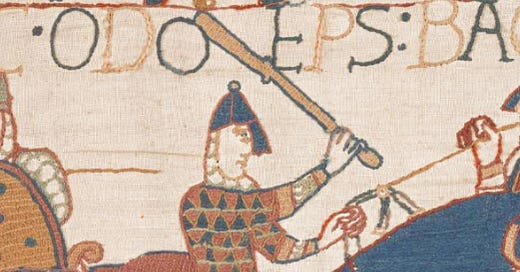How can we reconcile this:
with this?:
The first is the ultimate act of submission, nonviolence, and goodwill in the face of cruel injustice and appalling abuse. The second, according to the traditional interpretation, is the gruesome climax of a seemingly unnecessary, massively consequential, potentially unjust, and tragically corpse-laden battle between two Christian armies. The first is the agonizing death of, as the title says, INRI: Iesus Nazarenus, Rex Iudaeorum. The second is the agonizing death of, as the title says, Harold Rex: King Harold of England. The first is victory through virtue. The second is victory through slaughter.
How could the medieval imagination be so thoroughly interwoven with both warfare and the crucifixion of Christ? How could medieval culture glorify, in one breath, the exploits of blood-soaked warriors and, in the next, the words of a Man who said “blessed are the peacemakers, for they shall be called the children of God”? How could medieval civilization give knights an investiture ceremony so solemn and sacred that it evokes the ordination of a priest, and then send them out to live precisely the sort of life that the eternal High Priest apparently condemned?
Then saith Jesus unto him, “Turn back thy sword into its place,
for all of those who take the sword, they by the sword shall perish.”
Keep reading with a 7-day free trial
Subscribe to Via Mediaevalis to keep reading this post and get 7 days of free access to the full post archives.






